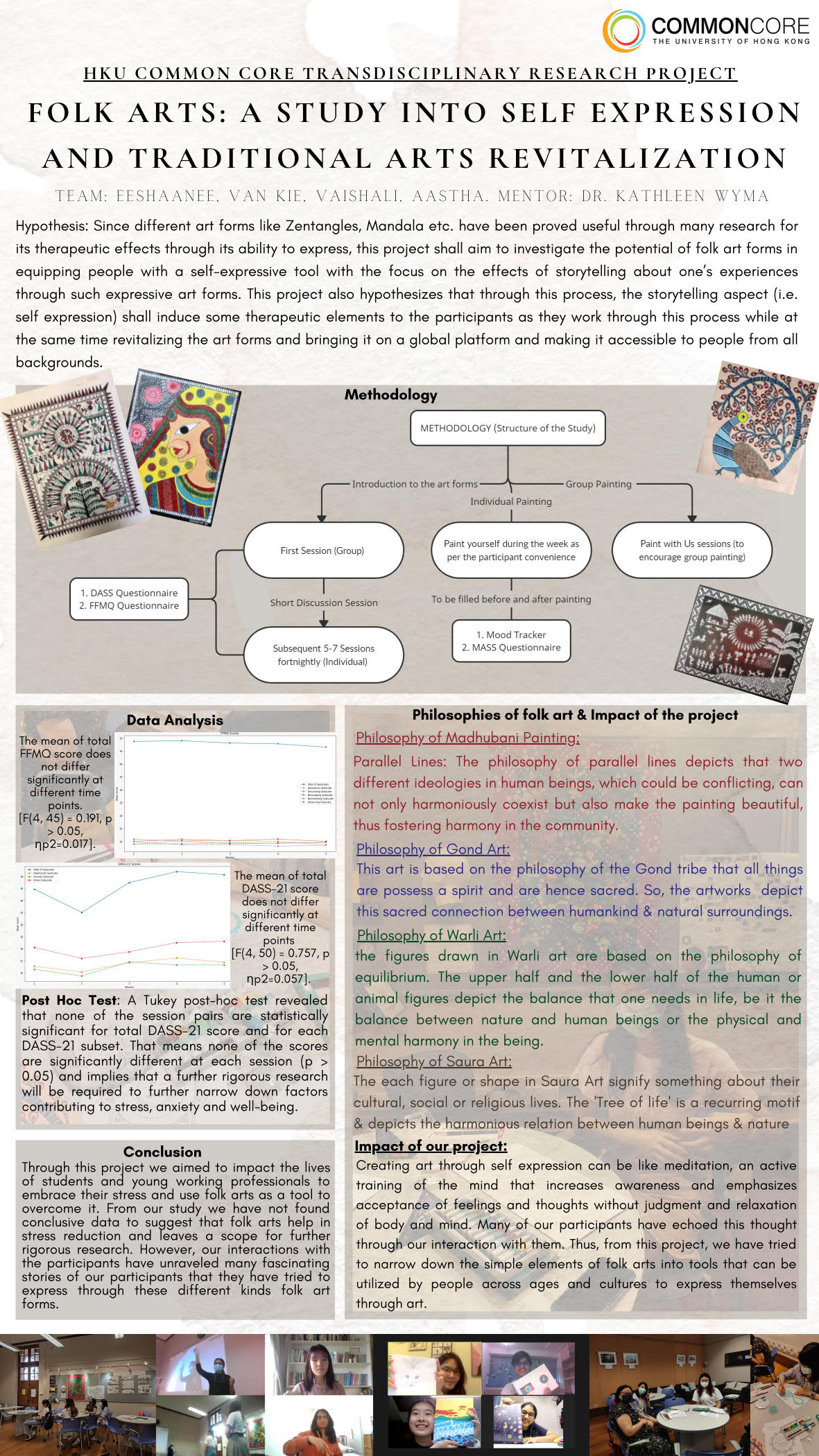Folk Arts: An exploratory study into self-expression and traditional arts revitalization
Folk Arts: An exploratory study into self-expression and traditional arts revitalization
By Eeshaanee Shandilya, Van Kie Liew, Aastha Gaur, Vaishali Ranbir Rathi
Supervised by Dr. Kathleen Wyma, Lecturer, School of Humanities, The University of Hong Kong
Introduction:
Traditional and folk-art forms have long played an integral role in our society. These art forms not only help understand different ways of life, but also tell a story that has been lived by many generations of a community. These stories have a great potential to empower communities, promote social inclusion, and even drive social change. They also help reduce stress, through the therapeutic aspects of storytelling. However, this potential is largely unexplored. Exploring different cultural, psychological, behavioural and societal aspects of traditional folk arts can illustrate the different perspectives of folk-art forms in a global context. The sociological theory on Art Perception by Bourdeiu elucidates how the interpretations of art are subject to ‘codes’ of knowledge of the history, society, philosophy and other ideals behind the art form. For instance, Madhubani paintings encapsulate the idea of harmonious living and acceptance of opposing ideas. The philosophy of parallel lines depicts that two different ideologies in human beings, which could be conflicting, can not only harmoniously coexist but also make the painting beautiful (Bharati Dayal, TedTalk), thus fostering harmony in the community. Through this research, we aim to explore and bring forth the nuances and important aspects of traditional art forms, that would delve into understanding human beings on a societal level (including societal issues), and explore the connection between mental health (particularly stress) and the practice of traditional or folk-art forms in order to reduce stress and create more resilience in our society.



